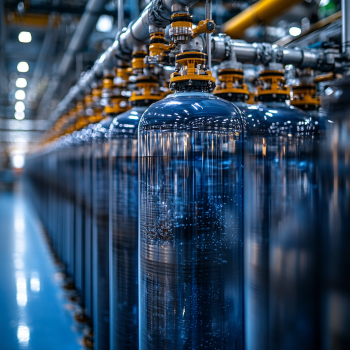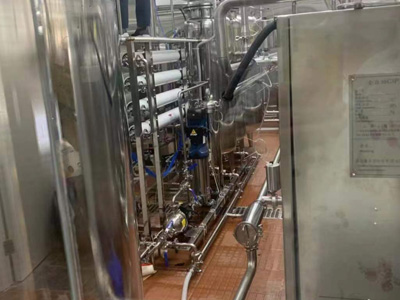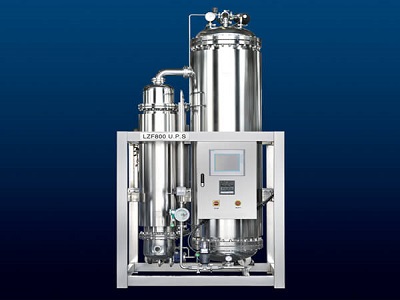In the pharmaceutical industry, water purity isn’t just a nice-to-have—it’s a must. From manufacturing injectable drugs to cleaning equipment, water used in pharma has to meet sky-high standards. That's where pharmaceutical reverse osmosis systems come in, delivering ultra-pure water by removing contaminants like PFAS, microbes, and dissolved solids. This guide dives into how these systems work, why they’re critical for pharmaceutical manufacturing, and how they tackle tough contaminants like PFAS. Let’s break it down and explore what makes RO systems a game-changer for the industry.
Pharmaceutical reverse osmosis systems are advanced water purification setups designed to meet the stringent requirements of the pharmaceutical industry. Unlike standard RO systems used in municipal or industrial settings, these are engineered to produce water that complies with pharmacopeia standards, like the United States Pharmacopeia (USP) and European Pharmacopoeia (EP), for applications such as Water for Injection (WFI) or purified water (PW). They remove a wide range of contaminants, including ions, organic compounds, microbes, and emerging pollutants like PFAS (per- and polyfluoroalkyl substances).
RO systems in pharma are built with high-grade materials (like 316L stainless steel) and often paired with additional purification steps like electrodeionization (EDI) or ultrafiltration (UF) to ensure compliance with GMP and FDA regulations.

Water is the lifeblood of pharmaceutical manufacturing. It’s used in drug formulation, equipment cleaning, and even as a raw material in biologics. Impurities in water—whether chemical, microbial, or PFAS—can compromise product safety, lead to regulatory violations, or worse, harm patients. Here’s why purity is non-negotiable:
Patient Safety: Contaminated water can introduce end Omicron:0.0pt;" data-offset-key="6m4r0-1-0">endotoxins or microbes into injectable drugs, causing serious health risks.
Regulatory Compliance: The FDA and EMA require strict adherence to USP and EP water standards.
Product Integrity: Impurities like PFAS can alter drug efficacy or stability, leading to costly batch failures.
A single water quality failure can cost millions in recalls and damage a company’s reputation, making pharmaceutical reverse osmosis systems a critical investment.
Reverse osmosis is a filtration process that uses a semi-permeable membrane to remove impurities from water. Here’s how it works in a pharmaceutical reverse osmosis system:
Pretreatment: Feed water passes through filters (e.g., sand, carbon) to remove large particles, chlorine, and sediments that could damage the RO membrane.
Reverse Osmosis: Water is forced through a high-pressure RO membrane, which blocks contaminants like salts, organic compounds, and microbes while allowing pure water to pass through.
Post-Treatment: Additional steps like EDI or UF ensure the water meets USP/EP standards for conductivity and microbial limits.
PFAS, often called “forever chemicals,” are persistent, toxic compounds found in water sources. They’re a growing concern in pharma due to their potential to contaminate drug manufacturing processes. According to the EPA, RO systems can remove up to 99% of PFAS (like PFOA and PFOS) due to their small molecular size rejection by RO membranes.
While RO is highly effective against PFAS, combining it with activated carbon filtration or ion exchange can enhance removal efficiency, especially for short-chain PFAS.
Benefit | Description |
|---|---|
High Purity | Removes 95–99% of dissolved solids, microbes, and PFAS, meeting USP/EP standards. |
Energy Efficiency | Uses less energy than distillation, reducing operational costs. |
Compact Design | Smaller footprint compared to traditional WFI systems, ideal for modern plants. |
Scalability | Modular systems can be scaled to meet varying production demands. |
Sustainability | Lower water and energy waste compared to distillation-based systems. |
Insight: Pharmaceutical reverse osmosis systems offer a cost-effective, sustainable alternative to distillation for WFI production, especially for smaller facilities.
While RO systems are powerful, they’re not without challenges:
Membrane Fouling: Organic matter or scaling can clog membranes, requiring regular cleaning.
Biofilm Risk: Stagnant water can lead to microbial growth, necessitating frequent sanitization.
Incomplete PFAS Removal: Some short-chain PFAS may pass through standard RO membranes, requiring additional filtration.
High Maintenance: Regular membrane replacement and monitoring increase operational costs.
Insight: Pairing RO with UV disinfection or UF can mitigate biofilm risks and enhance PFAS removal, ensuring consistent water quality.
Selecting a pharmaceutical reverse osmosis system depends on several factors:
Water Quality Needs: Ensure the system meets USP/EP standards for WFI or PW.
Capacity: Small facilities may need 500 L/h, while large plants require 10,000+ L/h.
Contaminant Profile: If PFAS is a concern, opt for RO systems with advanced membranes or additional carbon filtration.
Budget: Balance initial costs (CAPEX) with long-term savings (OPEX). RO systems typically have lower OPEX than distillation.
Supplier Expertise: Choose a trusted provider like Biocell Pharma for customized, compliant systems.
To keep your RO system running smoothly:
Regular Cleaning: Perform chemical or hot water sanitization weekly to prevent biofilm.
Membrane Checks: Test membrane integrity monthly to detect fouling or damage.
Monitoring: Use automated systems to track conductivity, TOC, and microbial counts in real-time.
Filter Replacement: Replace pretreatment filters every 3–6 months to protect RO membranes.
Sustainability is a big deal in pharma today. Pharmaceutical reverse osmosis systems shine in this area:
Energy Savings: RO uses 30–50% less energy than distillation-based WFI systems.
Water Efficiency: Advanced pretreatment reduces water waste by up to 40%.
Reduced Carbon Footprint: Lower energy use translates to fewer CO2 emissions.
Recyclable Components: Modular RO systems allow for component upgrades, reducing waste.
Sustainable RO systems align with ESG goals, making your facility more attractive to eco-conscious investors and regulators.
Q: Can pharmaceutical reverse osmosis systems remove PFAS completely?
A: RO systems remove up to 99% of PFAS, but short-chain PFAS may require additional filtration like activated carbon or ion exchange for complete removal.
Q: How do pharmaceutical RO systems compare to distillation for WFI production?
A: RO systems are more energy-efficient and compact but require stricter maintenance to prevent biofilm. Distillation is more reliable for large-scale WFI but costs more to operate.
Q: What is the lifespan of a pharmaceutical reverse osmosis system?
A: With proper maintenance, RO systems can last 10–15 years, though membranes typically need replacement every 2–5 years.
Q: Are RO systems suitable for small pharmaceutical facilities?
A: Yes, modular pharmaceutical reverse osmosis systems are ideal for small facilities due to their compact size and scalability.
Q: How often should I test water quality in an RO system?
A: Test daily for conductivity and weekly for microbial counts and endotoxins to ensure compliance with USP/EP standards.
Q: Can Biocell Pharma customize RO systems for PFAS removal?
A: Biocell Pharma offers tailored pharmaceutical reverse osmosis systems with advanced membranes and add-ons like carbon filtration to target PFAS.
This is the first one.


